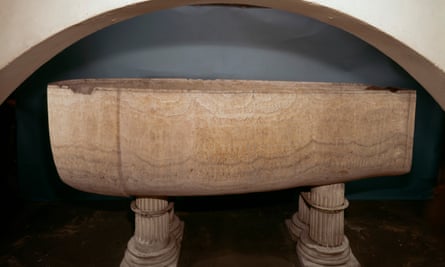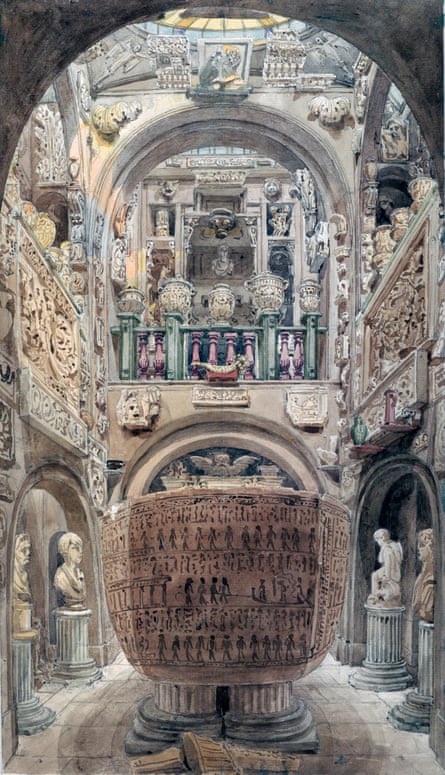When the architect Sir John Soane finally managed to install his greatest treasure in his extraordinary combined home, studio and museum in London, he threw a three-day party to celebrate.
The sarcophagus of the pharaoh Seti I, carved from a single vast block of translucent alabaster, cost Soane £2,000 after the British Museum turned it down as too expensive. Getting in the 3,000-year-old relic, the size of a small boat and weighing several tonnes, involved knocking down a sizeable chunk of his back wall, and demolishing his unfortunate housekeeper’s sitting room.
Over three days and nights, almost 900 people trooped through his rooms and into the basement renamed “the Sepulchral Chamber”, where the sarcophagus glowed eerily, lit by candles placed inside. The museum recently recreated the experiment, and deputy director Helen Dorey recalled the extraordinary effect when the whole block lit up like a lantern, and the thousands of tiny human figure hieroglyphics carved into every inch of stone seemed to flicker and move. “It was a truly shiver down the spine moment,” she said.

In 1824 it was a sensation. The Morning Post praised the “liberal and patriotic” owner and reported: “We believe that there is no country in Europe which would not be proud of possessing such a rarity and that the Emperor of Russia, in particular, would rejoice to obtain it.”
Dorey, who has been researching the celebrations from the meticulous accounts preserved in Soane’s archives, found that all Soane’s apprentices were set to writing invitations for a week. Extra waiting staff were hired and the guests got through six pounds of tea and 31 pounds of sugar over the three nights, quantities of brandy, ale and porter, and cakes ordered in from Robinson and Todd’s in nearby Fleet Street. Just lighting the outside of the building cost almost £25, with hundreds more oil and candle lamps hired for the interiors.
The painter Benjamin Robert Haydon managed to get into one of the receptions where he literally bumped into JMW Turner and the poet Samuel Taylor Coleridge. He arrived in time to witness the grand entrance of the Duke of Sussex, “squeezing and wheezing along the narrow passage, driving all the women before him like a Blue-Beard, and putting his royal head into the coffin, added his wonder to the wonder of the rest”.
The sarcophagus was discovered in October 1817 in the monumental tomb of Seti, one of the most elaborate in the Valley of the Kings, by an extraordinary character, Giovanni Belzoni.
Belzoni was a circus strongman – born in Italy, he called himself the Patagonian Sampson – turned self-taught engineer and finally Egyptologist. An exhibition at the Sir John Soane’s museum celebrating the bicentenary of his discovery includes objects from the tomb and illustrations of the paintings covering every surface, which were still blazing with colour when he found them. Curator Joanna Tinworth can’t prove that Belzoni and Soane ever met, but the architect took a keen interest in the discovery even before he bought the sarcophagus.

Belzoni now has a dodgy reputation, seen as little better than a tomb robber, but Tinworth has a soft spot for him. “He genuinely had a great interest in Egypt and he thought he was saving and preserving those treasures by taking them out of the country. And when others were excavating with explosives, he was going in with pick and shovel. It’s not how we would ever do things now, but I don’t think he was ill-intentioned.”

Comments (…)
Sign in or create your Guardian account to join the discussion